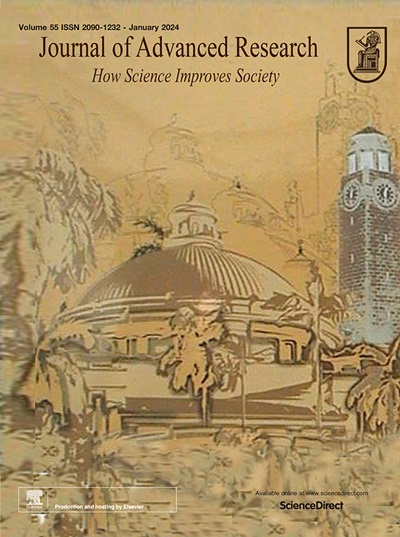Targeting mesenchymal monocyte-derived macrophages to enhance the sensitivity of glioblastoma to temozolomide by inhibiting TNF/CELSR2/p65/Kla-HDAC1/EPAS1 axis
IF 11.4
1区 综合性期刊
Q1 MULTIDISCIPLINARY SCIENCES
引用次数: 0
Abstract
Introduction
Temozolomide (TMZ) resistance poses a significant challenge to the treatment of aggressive and highly lethal glioblastomas (GBM). Monocyte-derived Macrophages (MDM) within the tumor microenvironment are key factors contributing to TMZ resistance in GBM. Lactate-mediated histone lysine lactylation (Kla) plays a crucial role in the regulation of tumor progression. However, the mechanism through which MDM-induced Kla expression promotes TMZ resistance in GBM remains unclear.Objectives
The objective of this study s to identify a subtype of MDM with therapeutic potential target and to elucidate the mechanisms through which this subtype of MDM contributes to tumor malignant progression and TMZ resistance.Methods
We integrated single-cell RNA sequencing (scRNA-seq) and spatial transcriptomics data to evaluate whether mesenchymal (MES) MDM is associated with poor prognosis. By establishing a subtype model of GBM cells for the first time, we validated the mechanism by which MES-MDM promotes subtype conversion of tumor cells. Using patient-derived GBM organoids and an intracranial orthotopic GBM model, we demonstrated that targeting MES-MDMs increased GBM sensitivity to TMZ treatment.Results
We identified a novel MDM subtype, MES-MDM, in the hypoxic niches of the perinecrotic region characterized by high TREM1 expression, which fueled GBM progression. Hypoxia drived MES-MDM signatures by activating ATF3 transcription. MES-MDM facilitated the transition from the NPC to the MES subtype in GBM cells, in which Histone Deacetylase 1 (HDAC1) Kla, induced by the TNF-CELSR2/p65 signaling pathway, promoted this conversion, thereby promoting TMZ resistance. Targeting MES-MDM with TREM1 inhibitory peptides amplified TMZ sensitivity, offering a potential strategy for overcoming resistance to therapy in GBM. Targeting TREM1 enhanced the effectiveness of anti-PD-1 immunotherapy.Conclusion
This study provides a potential therapeutic strategy for patients with MES-subtype GBM by targeting MES-MDMs in combination with TMZ or PD-1 antibody treatment.

靶向间充质单核细胞源性巨噬细胞通过抑制TNF/CELSR2/p65/Kla-HDAC1/EPAS1轴增强胶质母细胞瘤对替莫唑胺的敏感性
替莫唑胺(TMZ)耐药性对侵袭性和高致死性胶质母细胞瘤(GBM)的治疗提出了重大挑战。肿瘤微环境中的单核细胞源性巨噬细胞(MDM)是GBM中TMZ耐药的关键因素。乳酸介导的组蛋白赖氨酸乳酸化(Kla)在调节肿瘤进展中起着至关重要的作用。然而,mdm诱导的Kla表达促进GBM中TMZ抗性的机制尚不清楚。本研究的目的是鉴定一种具有潜在治疗靶点的MDM亚型,并阐明该亚型MDM促进肿瘤恶性进展和TMZ耐药性的机制。方法综合单细胞RNA测序(scRNA-seq)和空间转录组学数据,评估间充质(mesenchymal, MES) MDM是否与不良预后相关。通过首次建立GBM细胞亚型模型,验证了MES-MDM促进肿瘤细胞亚型转化的机制。使用患者源性GBM类器官和颅内原位GBM模型,我们证明靶向MES-MDMs增加了GBM对TMZ治疗的敏感性。研究人员发现了一种新的MDM亚型MES-MDM,该亚型存在于坏死性会阴区的缺氧生态位,其特征是TREM1的高表达,促进了GBM的进展。缺氧通过激活ATF3转录驱动MES-MDM特征。MES- mdm促进了GBM细胞从NPC亚型向MES亚型的转变,其中由TNF-CELSR2/p65信号通路诱导的组蛋白去乙酰化酶1 (HDAC1) Kla促进了这种转化,从而促进了TMZ耐药性。用TREM1抑制肽靶向MES-MDM可扩增TMZ敏感性,为克服GBM治疗耐药提供了潜在的策略。靶向TREM1增强了抗pd -1免疫治疗的有效性。结论本研究为MES-MDMs联合TMZ或PD-1抗体治疗MES-MDMs提供了一种潜在的治疗策略。
本文章由计算机程序翻译,如有差异,请以英文原文为准。
求助全文
约1分钟内获得全文
求助全文
来源期刊

Journal of Advanced Research
Multidisciplinary-Multidisciplinary
CiteScore
21.60
自引率
0.90%
发文量
280
审稿时长
12 weeks
期刊介绍:
Journal of Advanced Research (J. Adv. Res.) is an applied/natural sciences, peer-reviewed journal that focuses on interdisciplinary research. The journal aims to contribute to applied research and knowledge worldwide through the publication of original and high-quality research articles in the fields of Medicine, Pharmaceutical Sciences, Dentistry, Physical Therapy, Veterinary Medicine, and Basic and Biological Sciences.
The following abstracting and indexing services cover the Journal of Advanced Research: PubMed/Medline, Essential Science Indicators, Web of Science, Scopus, PubMed Central, PubMed, Science Citation Index Expanded, Directory of Open Access Journals (DOAJ), and INSPEC.
 求助内容:
求助内容: 应助结果提醒方式:
应助结果提醒方式:


